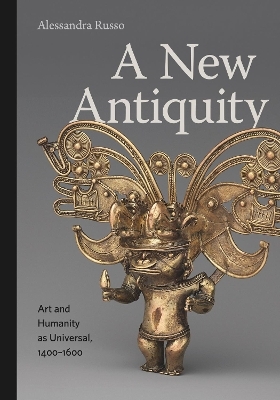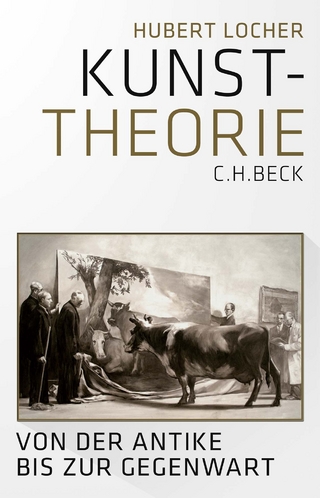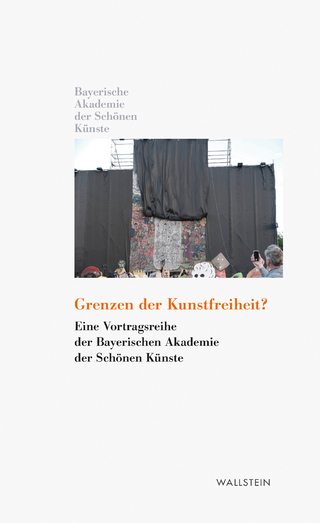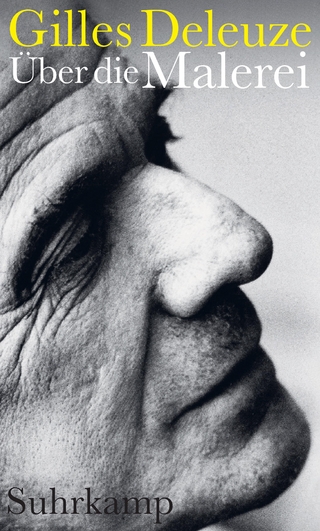
A New Antiquity
Art and Humanity as Universal, 1400–1600
Seiten
2024
Pennsylvania State University Press (Verlag)
978-0-271-09569-1 (ISBN)
Pennsylvania State University Press (Verlag)
978-0-271-09569-1 (ISBN)
We tend to think of sixteenth-century European artistic theory as separate from the artworks displayed in the non-European sections of museums. Alessandra Russo argues otherwise. Instead of considering the European experience of “New World” artifacts and materials through the lenses of “curiosity” and “exoticism,” Russo asks a different question: What impact have these works had on the way we currently think about—and theorize—the arts?
Centering her study on a vast corpus of early modern textual and visual sources, Russo contends that the subtlety and inventiveness of the myriad of American, Asian, and African creations that were pillaged, exchanged, and often eventually destroyed in the context of Iberian colonization—including sculpture, painting, metalwork, mosaic, carving, architecture, and masonry—actually challenged and revolutionized sixteenth-century European definitions of what art is and what it means to be human. In this way, artifacts coming from outside Europe between 1400 and 1600 played a definitive role in what are considered distinctively European transformations: the redefinition of the frontier between the “mechanical” and the “liberal” arts and a new conception of the figure of the artist.
Original and convincing, A New Antiquity is a pathbreaking study that disrupts existing conceptions of Renaissance art and early modern humanity. It will be required reading for art historians specializing in the Renaissance, scholars of Iberian and Latin American cultures and global studies, and anyone interested in anthropology and aesthetics.
Centering her study on a vast corpus of early modern textual and visual sources, Russo contends that the subtlety and inventiveness of the myriad of American, Asian, and African creations that were pillaged, exchanged, and often eventually destroyed in the context of Iberian colonization—including sculpture, painting, metalwork, mosaic, carving, architecture, and masonry—actually challenged and revolutionized sixteenth-century European definitions of what art is and what it means to be human. In this way, artifacts coming from outside Europe between 1400 and 1600 played a definitive role in what are considered distinctively European transformations: the redefinition of the frontier between the “mechanical” and the “liberal” arts and a new conception of the figure of the artist.
Original and convincing, A New Antiquity is a pathbreaking study that disrupts existing conceptions of Renaissance art and early modern humanity. It will be required reading for art historians specializing in the Renaissance, scholars of Iberian and Latin American cultures and global studies, and anyone interested in anthropology and aesthetics.
Alessandra Russo is Professor in the Department of Latin American and Iberian Cultures at Columbia University. She is the author of The Untranslatable Image: A Mestizo History of the Arts in New Spain, 1500–160 and El realismo circular: Tierras, espacios y paisajes de la cartografía indígena novohispana, siglos XVI y XVII and a coeditor of Images Take Flight: Feather Art in Mexico and Europe.
| Erscheinungsdatum | 29.02.2024 |
|---|---|
| Zusatzinfo | 35 Halftones, color; 40 Halftones, black and white |
| Verlagsort | University Park |
| Sprache | englisch |
| Maße | 178 x 254 mm |
| Gewicht | 885 g |
| Themenwelt | Kunst / Musik / Theater ► Allgemeines / Lexika |
| Kunst / Musik / Theater ► Kunstgeschichte / Kunststile | |
| ISBN-10 | 0-271-09569-5 / 0271095695 |
| ISBN-13 | 978-0-271-09569-1 / 9780271095691 |
| Zustand | Neuware |
| Informationen gemäß Produktsicherheitsverordnung (GPSR) | |
| Haben Sie eine Frage zum Produkt? |
Mehr entdecken
aus dem Bereich
aus dem Bereich
eine Vortragsreihe der Bayerischen Akademie der Schönen Künste
Buch | Hardcover (2024)
Wallstein Verlag
20,00 €


